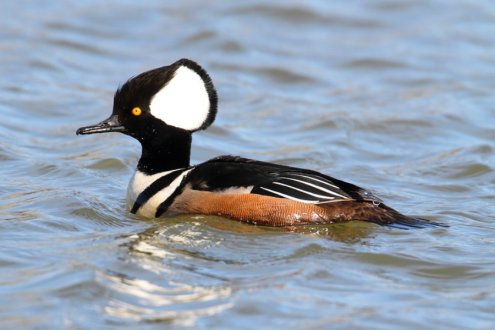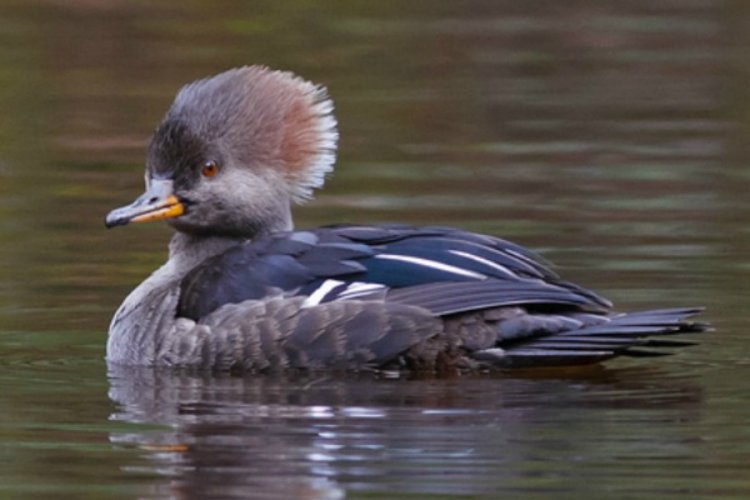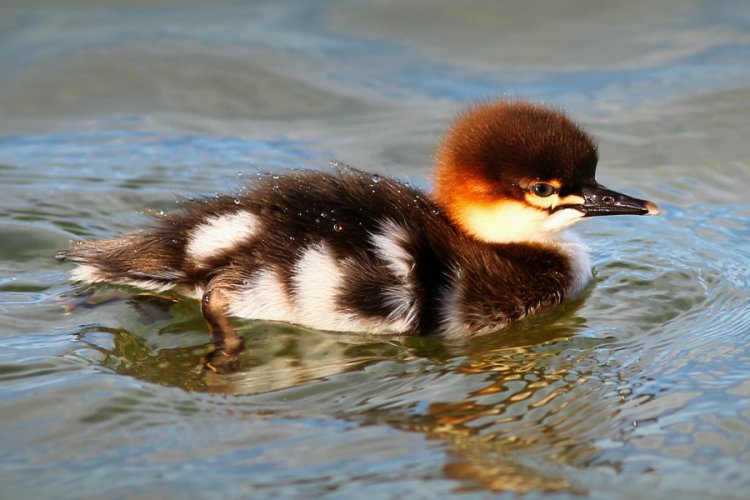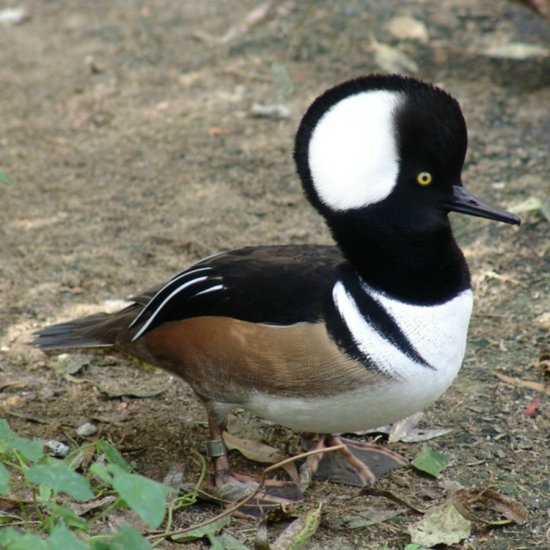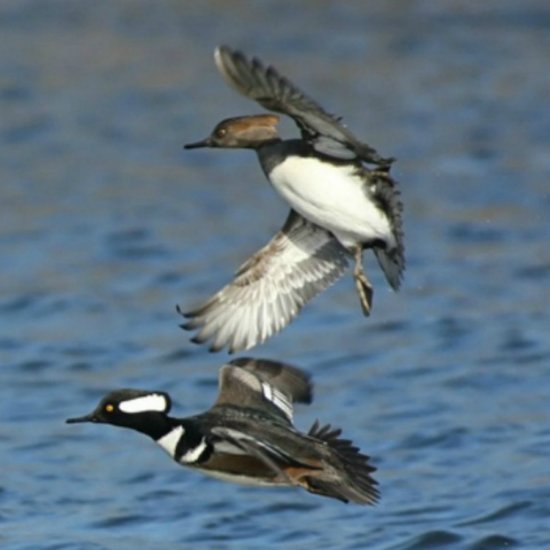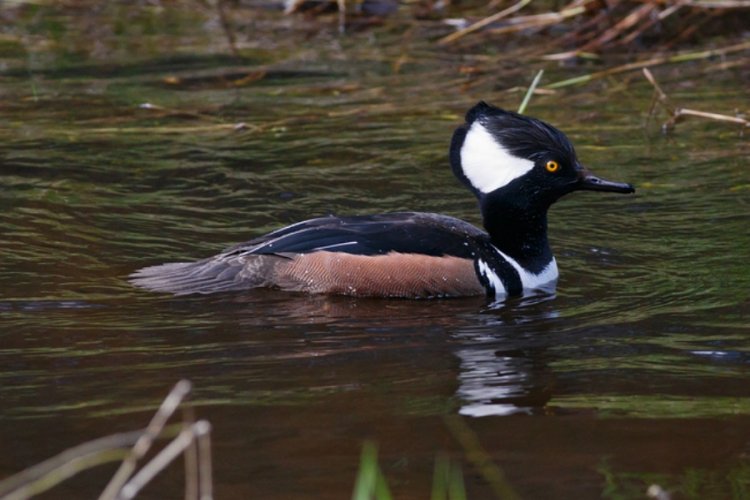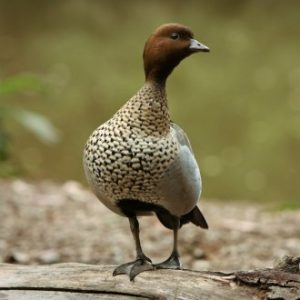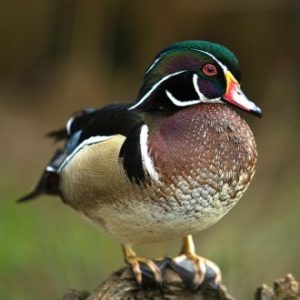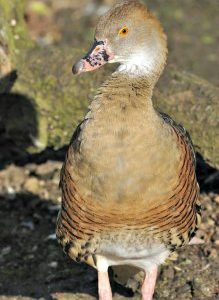Hooded Mergansers
Lophodytes cucullatus
Hooded Mergansers are the smallest yet most striking member of the six species of Mergansers. The Merganser group is a subsection of the duck family that is sometimes referred to as Sawbills. Sawbills have narrow, serrated bills.
Male Hooded Mergansers are unmistakable with compact bodies and large head crests. In breeding plumage, the male has delineated color patches. They start with olive-brown sides and a black back with brilliant white stripes. He also has a white breast with thick black bands on each side. His head is black with bright yellow eyes and is punctuated with a huge crest that is white with a black border. Even when he is not displaying, the crest is visible and attractive. The female Hooded Merganser is drabber in color but also sports a large crest in a more fringed, rusty color.
Range: Hooded Mergansers can be found throughout most of the United States, and are the only Merganser with a range restricted to only North America. There are two main populations of Hooded Merganser – an eastern and a western. Hooded Mergansers are migratory and are seen as far south as the Everglades in the winter months.
Habitat: Hooded Mergansers tend to inhabit forested, small freshwater ponds, lakes, and wetlands. They have a preference for slow-moving water with plenty of vegetation. During migration, they can be found in more open waters and even brackish and saltwater.
Status in the Wild: Although they were once in serious decline, the Hooded Merganser population now is increasing. This is due to the willingness of these ducks to make use of the artificial nest boxes intended for Wood Ducks and other wetland restoration initiatives.
Status in Aviculture: The Hooded Merganser is popular in zoos and large avian collections.
Breeding: One-year-old female Hooded Mergansers start searching for nesting sites but usually don’t start breeding until their second year. After an elaborate courtship by the males, Hooded Mergansers bond in pairs. Nests are usually in cavities such as old woodpecker holes 10 to 20 feet up in trees, or they can also make use of nest boxes. The female lays 6-18 white eggs, and she incubates them for 26-41 days, averaging 33 days. Within the first day or two of hatching, the young Mergansers jump to the ground and enter the water. They are quite self-sufficient, although the female watches over them for about 2-3 weeks.
Lifespan: Hooded Mergansers have been noted to live over 6 years old, although older could be possible with good husbandry.
Size: These are the smallest of the native North American mergansers, weighing 1.5 pounds at maturity with a length of 16-19 inches.
Housing Requirements: Hooded Mergansers are divers and are agile swimmers. They require a sufficiently large and diverse water source. Because the legs of the Hooded Merganser are positioned far back on their bodies, these birds are awkward walking about on land.
Diet: The serrated bill of the Hooded Merganser is designing for catching slippery fish and cracking underwater insects and crustaceans. Hooded Mergansers have a diverse wild diet made up of small fish, crustaceans, crayfish, and a large number of aquatic insects, especially for young birds.
Miscellaneous Notes: The male Hooded Merganser produces a fabulous collection of sounds during breeding and courtship. Most of his sounds are frog-like rolling croaks defined by pops.

